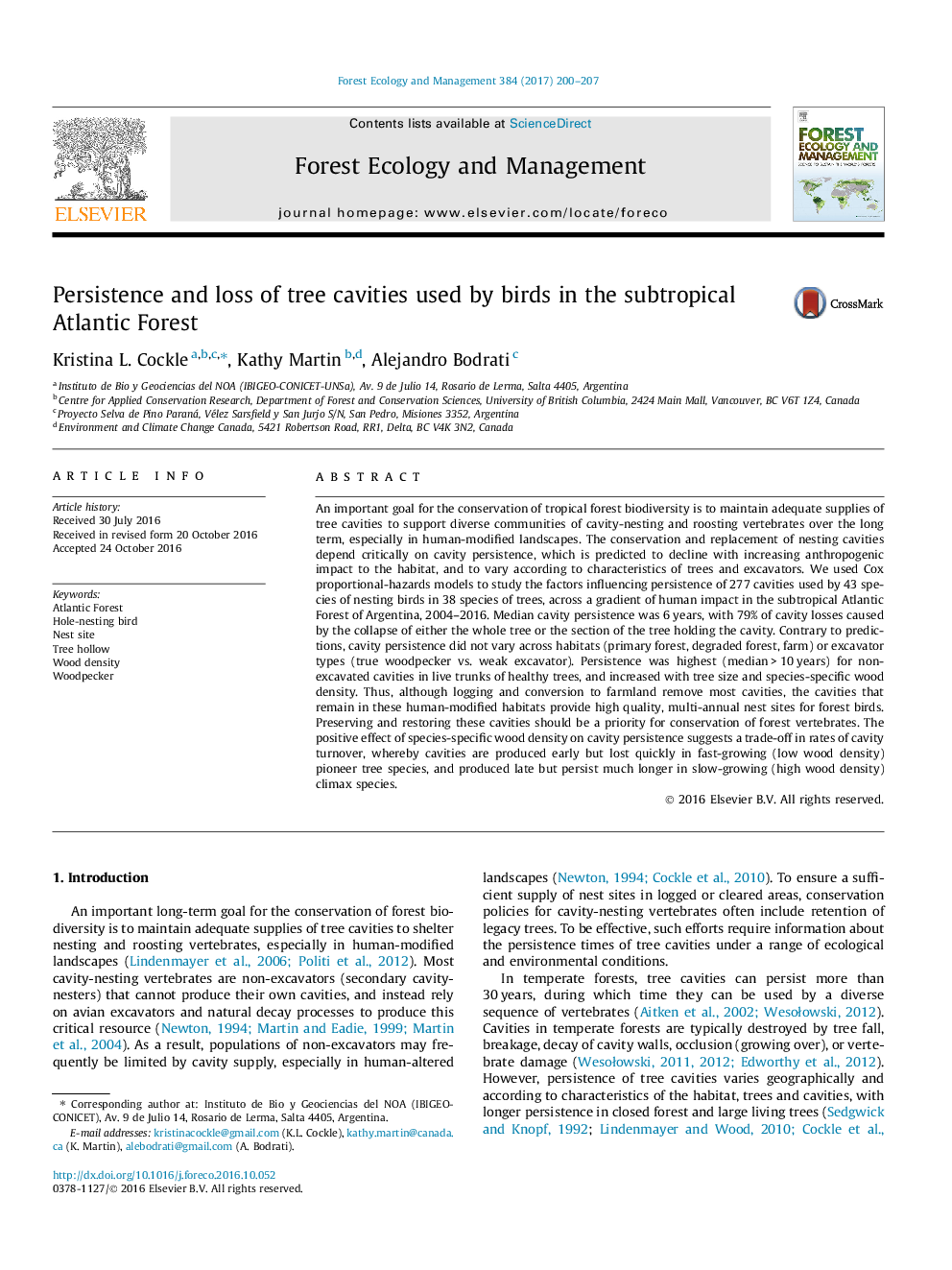| کد مقاله | کد نشریه | سال انتشار | مقاله انگلیسی | نسخه تمام متن |
|---|---|---|---|---|
| 4759624 | 1421374 | 2017 | 8 صفحه PDF | دانلود رایگان |
عنوان انگلیسی مقاله ISI
Persistence and loss of tree cavities used by birds in the subtropical Atlantic Forest
ترجمه فارسی عنوان
پایداری و از دست دادن حفره های درختی که توسط پرندگان در جنگل های اطلس ساتروپیک استفاده می شود
دانلود مقاله + سفارش ترجمه
دانلود مقاله ISI انگلیسی
رایگان برای ایرانیان
کلمات کلیدی
جنگل آتلانتیک، پرنده حفاری سوراخ، سایت نشت، درخت توخالی، چگالی چوب، چوب دستی
موضوعات مرتبط
علوم زیستی و بیوفناوری
علوم کشاورزی و بیولوژیک
بوم شناسی، تکامل، رفتار و سامانه شناسی
چکیده انگلیسی
An important goal for the conservation of tropical forest biodiversity is to maintain adequate supplies of tree cavities to support diverse communities of cavity-nesting and roosting vertebrates over the long term, especially in human-modified landscapes. The conservation and replacement of nesting cavities depend critically on cavity persistence, which is predicted to decline with increasing anthropogenic impact to the habitat, and to vary according to characteristics of trees and excavators. We used Cox proportional-hazards models to study the factors influencing persistence of 277 cavities used by 43 species of nesting birds in 38 species of trees, across a gradient of human impact in the subtropical Atlantic Forest of Argentina, 2004-2016. Median cavity persistence was 6 years, with 79% of cavity losses caused by the collapse of either the whole tree or the section of the tree holding the cavity. Contrary to predictions, cavity persistence did not vary across habitats (primary forest, degraded forest, farm) or excavator types (true woodpecker vs. weak excavator). Persistence was highest (median > 10 years) for non-excavated cavities in live trunks of healthy trees, and increased with tree size and species-specific wood density. Thus, although logging and conversion to farmland remove most cavities, the cavities that remain in these human-modified habitats provide high quality, multi-annual nest sites for forest birds. Preserving and restoring these cavities should be a priority for conservation of forest vertebrates. The positive effect of species-specific wood density on cavity persistence suggests a trade-off in rates of cavity turnover, whereby cavities are produced early but lost quickly in fast-growing (low wood density) pioneer tree species, and produced late but persist much longer in slow-growing (high wood density) climax species.
ناشر
Database: Elsevier - ScienceDirect (ساینس دایرکت)
Journal: Forest Ecology and Management - Volume 384, 15 January 2017, Pages 200-207
Journal: Forest Ecology and Management - Volume 384, 15 January 2017, Pages 200-207
نویسندگان
Kristina L. Cockle, Kathy Martin, Alejandro Bodrati,
